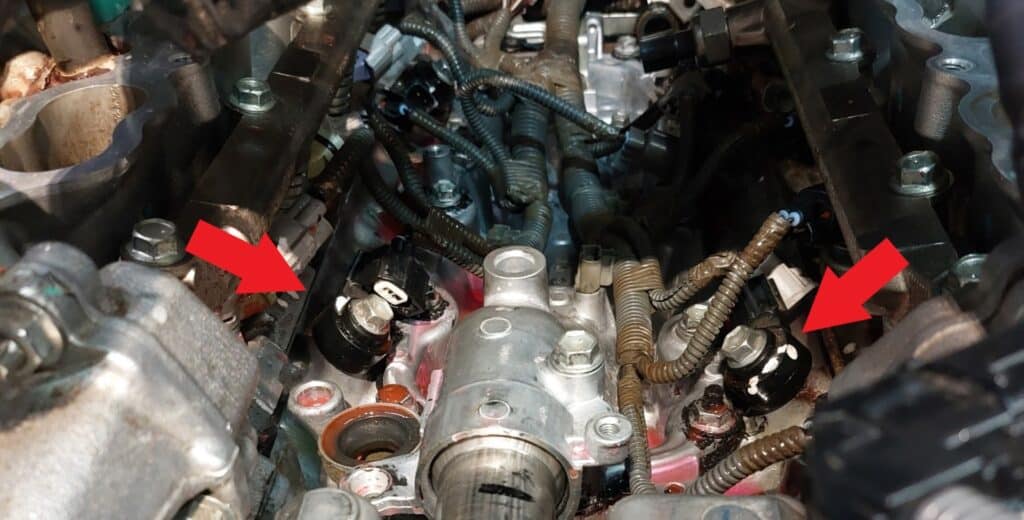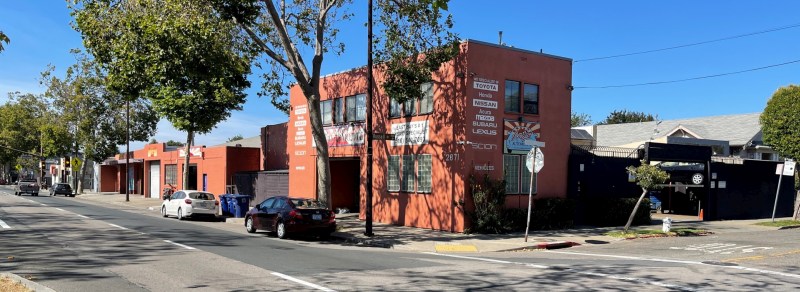Often, when knock sensors fail and trigger codes P0324–P0334, drivers don’t notice anything unusual beyond the check engine light turning on. With no other symptoms, you might wonder if replacing the knock sensor is really necessary.
There are good reasons people might want to put off this repair. Depending on where the sensor is located, it can be expensive, and if the car seems to run fine, skipping it might seem like a good idea, especially if money is tight.
This short article covers what a knock sensor does, why replacing it matters, and what can happen if you don’t, so you can make an informed decision.
Why is knock a problem?
Let’s start with why engine knock or “pinging” is bad. When knock caused by pre-ignition or detonation occurs, a sudden collision of flame fronts inside the combustion chamber causes extreme pressure spikes that can quickly destroy engine components. Knock is just as bad as running without oil or overheating. However, knock won’t necessarily occur if your knock sensor has failed. We’ll explain why a little later.
What’s the purpose of a knock sensor?
The reason for a knock sensor is to allow better engine performance and efficiency without the danger of engine damage caused by knock. Before knock sensor sensors, engines were de-tuned a little for safety. Engineers needed to account for differences in fuel’s octane rating, manufacturing variances, and combustion chamber carbon build up over time. With the addition of a knock sensor and on-the-fly adjustments, engineers were able to wring all the performance possible out of their engine designs, and only de-tune when necessary.
How does a knock sensor work?
Here’s what the sensor does. It creates a voltage when it’s vibrated and has an output similar to a microphone. The ECM “listens” for the vibration frequency that occurs during engine knock. If it “hears” knock it will adjust engine timing, air/fuel mixture, throttle, valve timing, and boost pressure in an effort to eliminate the knock.
If the ECM is hearing knocking frequently, it will change to safer “maps”. Maps control timing, throttle, boost pressure etc. The safer maps will prevent knock, but they’ll also reduce performance. You’ll lose engine power and efficiency. This is why your car will be slower, and its MPG will decrease if too much knocking is detected.
What happens if you keep driving with a failed knock sensor?
Now, what happens when the knock sensor fails? A couple things happen. First, the check engine light will come on, and a trouble code will be stored.
Possible codes include:
- P0325 — Knock Sensor 1 Circuit Malfunction (Bank 1 or Single Sensor)
- P0326 — Knock Sensor 1 Circuit Range/Performance (Bank 1 or Single Sensor)
- P0327 — Knock Sensor 1 Circuit Low Input (Bank 1 or Single Sensor)
- P0328 — Knock Sensor 1 Circuit High Input (Bank 1 or Single Sensor)
- P0329 — Knock Sensor 1 Circuit Intermittent (Bank 1 or Single Sensor)
- P0330 — Knock Sensor 2 Circuit Malfunction (Bank 2)
- P0331 — Knock Sensor 2 Circuit Range/Performance (Bank 2)
- P0332 — Knock Sensor 2 Circuit Low Input (Bank 2)
- P0333 — Knock Sensor 2 Circuit High Input (Bank 2)
- P0334 — Knock Sensor 2 Circuit Intermittent (Bank 2)
Ok. So, what if you’re not due for a smog check? The car is running fine. Why should you fix it before California forces you to?
One reason is that there’s only one check engine light. If another problem develops the car will have no way to alert you because the check engine light is already on. The ECM can’t turn it on more. You could probably get around this by purchasing and OBDII code reader and manually checking for problems though.
The more important reason to fix the knock sensor is performance and efficiency. When the ECM knows the knock sensor is bad it will de-tune your car. It will still run “fine”, but it will have less power and use more fuel.
Now, if you have a car with a hard to access knock sensor that’s going to be expensive to replace and you don’t have the money to fix it can you continue to drive? Sure. You’ll need to get to work and make some money. Your car won’t be damaged by driving with a failed knock sensor. You’re just going to waste some gas money and won’t be able to register the car until it’s fixed.
The exception to the rule
If you have car with a turbocharged gasoline direct injection engine (TGDI), I’d recommend fixing your knock sensor immediately. These engines have lots of problems with low-speed pre-ignition (LSPI). If you have a car with a TGDI, use the best possible fuel, motor oil, and perform all maintenance on time or early. While these engines have good fuel economy and impressive power for their displacement, their reliability has been poor so far and they are very unforgiving on lack of maintenance.
How much does it cost to replace a knock sensor?
If you buy a Genuine Toyota, Honda, Subaru or Mazda knock sensor, the part itself is usually between $100 and $250. If you buy an aftermarket knock sensor, I’ve seen them sell for as little as $10. We won’t install Amazon or EBay parts here though. The risk is too high.
The big variation in price is labor. It may take as many as 10 hours to replace a knock sensor on some Lexus products and as little as half an hour on some Honda & Subaru models. The more labor that’s required, the more important buying a quality part becomes. If you save $240 on the part but need to pay for $1800 in labor a second time, that’s not a good deal at all.
Frequently the sensor isn’t the only part needed. The knock sensor sub-harness is often needed and on many V6 and V8 engine the knock sensors are located under the intake manifold, so there are many gaskets, o-rings, and hoses that will need to be replaced during the repair.

Image credit: Berkeley Bob’s
Conclusion
Can you keep driving with a failed knock sensor? You can, but you’ll lose power and waste gas. And if you’re in California or a state with emissions testing, you’ll need to fix it before renewing registration.
If you’d like an estimate to diagnose your check engine light or replace your knock sensor and you’re near Berkeley, give us a call!

